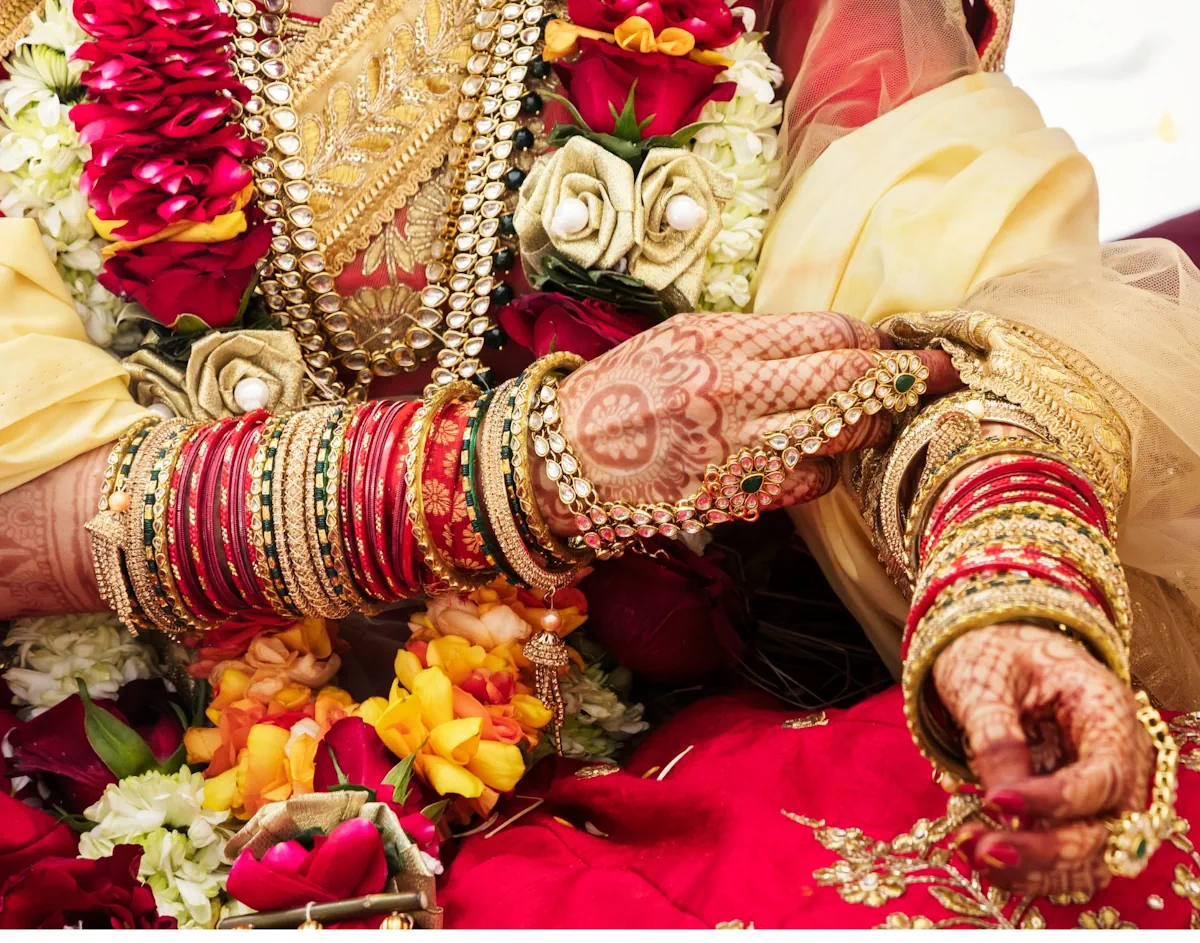Table of Contents
Introduction to the Mehndi Ceremony
In the vibrant tapestry of Indian wedding traditions, the Mehndi ceremony stands as one of the most artistic and meaningful pre-wedding celebrations. This cherished ritual, where intricate henna designs adorn the bride’s hands and feet, symbolizes not just beauty, but the deep cultural connections and joyful anticipation of marriage.

Origins and Cultural Significance
Dating back thousands of years across India, Egypt, and the Middle East, the Mehndi ceremony has evolved from its medicinal roots into a cornerstone of wedding celebrations. The natural cooling properties of henna made it particularly significant in warm climates, while its rich color came to symbolize blessings and prosperity.
Historical Evolution
- Ancient origins in multiple cultures
- Traditional medicinal properties
- Development as a wedding ritual
- Regional variations and influences

Symbolism and Sacred Meanings
Auspicious Blessings
The deep red-brown color of mehndi carries powerful symbolic meaning:
- Protection from evil spirits
- Bringing good fortune to the marriage
- Symbolizing the depth of love
- Representing fertility and prosperity
Design Elements
Each pattern and motif in mehndi designs carries specific meaning:
- Peacocks: Beauty and grace
- Lotus flowers: Purity and spirituality
- Vines and leaves: Growth and harmony
- Hidden initials: Romance and playfulness

The Ceremony Experience
A Mehndi ceremony is filled with joy, music, and celebration. Here’s what typically occurs:
Traditional Elements
- Application by skilled artists
- Songs and dance performances
- Gathering of female family and friends
- Sharing of stories and blessings
Application Process
- Preparation of natural henna paste
- Creation of intricate designs
- Drying and developing period
- Color deepening over 24-48 hours
Modern Celebrations
Today’s Mehndi ceremonies blend tradition with contemporary style:
- Fusion of traditional and modern designs
- Integration of multiple cultural elements
- Professional photography sessions
- Interactive guest experiences
Planning Your Mehndi Ceremony
At Chapel of the Flowers, we embrace cultural traditions and can help incorporate a Mehndi ceremony into your wedding celebrations. Our wedding packages can be customized to include:
- Dedicated space for the ceremony
- Coordination with professional henna artists
- Photography and videography services
- Cultural music and entertainment
Ready to plan your traditional Indian wedding with a beautiful Mehndi ceremony? Contact our wedding planners to discuss how we can help create your perfect celebration.
[previous content remains the same until before the schema markup]
Frequently Asked Questions About Mehndi Ceremonies
How long before the wedding should the Mehndi ceremony take place?
The Mehndi ceremony typically takes place 1-2 days before the wedding. This timing allows the henna to reach its deepest color and ensures the designs look their best for the wedding day. It also gives enough time for the paste to completely dry and flake off naturally.
How long does it take to apply Mehndi?
The application process usually takes 4-6 hours for a bride’s full bridal Mehndi, which includes intricate designs on both hands (up to the elbows) and feet (up to the ankles). Simpler designs or partial application can take 1-2 hours.
How long does Mehndi last?
Mehndi typically lasts 1-3 weeks, depending on the quality of henna used, aftercare, and individual skin characteristics. The color is usually darkest in the first few days and gradually fades over time.
Can non-Indian couples incorporate a Mehndi ceremony into their wedding?
Yes! While Mehndi is traditionally associated with Indian weddings, many couples from different cultural backgrounds choose to incorporate this beautiful tradition into their celebrations. It’s important to approach it with respect for its cultural significance.
What should I wear to a Mehndi ceremony?
Guests typically wear colorful, festive attire. Traditional Indian wear like salwar kameez or lehengas are common, but any bright, comfortable clothing is appropriate. The bride often wears yellow or green, which are considered auspicious colors.
Are there any special aftercare instructions for Mehndi?
Yes, to achieve the darkest possible color:
- Keep the dried paste on as long as possible (ideally 6-8 hours)
- Avoid water contact for 24 hours after paste removal
- Apply a mixture of lemon juice and sugar to the dried design
- Keep the area warm and moisturized
Can Mehndi be done on a different part of the body?
While traditionally applied to hands and feet, Mehndi can be applied anywhere on the body. Modern brides sometimes opt for designs on their arms, back, or shoulders, though hands remain the most significant location culturally.
What makes Mehndi darken to different colors?
The darkness of Mehndi depends on several factors:
- Quality and freshness of henna paste
- Body temperature and skin type
- Length of time the paste remains on the skin
- Aftercare practices
